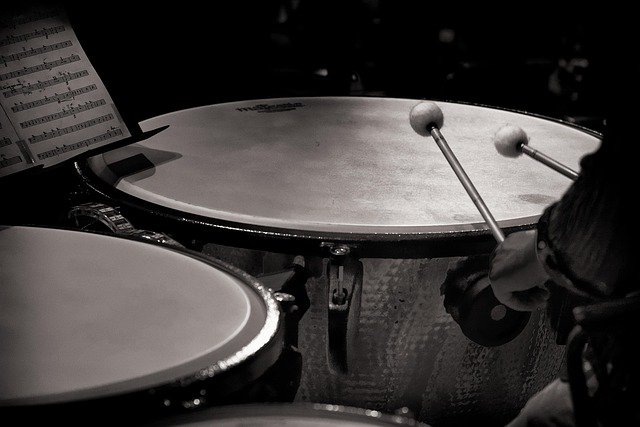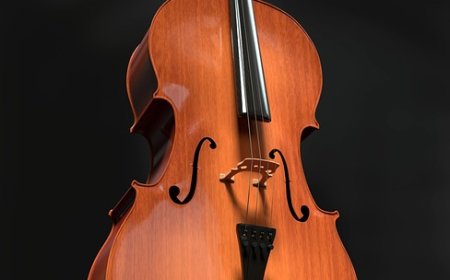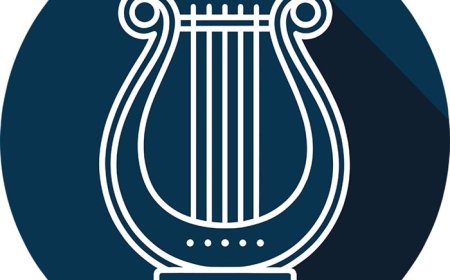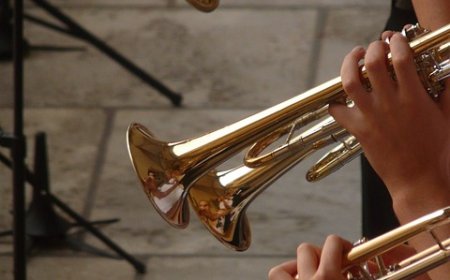Timpani Facts for Students | Learn How the Timpani Work & Their Role in Music
Learn what timpani are, how they work, their parts and history, and explore famous players and fun facts. A complete student-friendly guide to this orchestral percussion instrument.

🥇 Introduction
The timpani, also known as kettledrums, are some of the most important and dramatic instruments in the percussion section of orchestras and concert bands. With their deep, thunder-like sound and ability to play specific musical pitches, timpani are used to create excitement, tension, and rhythm in classical and cinematic music. Their booming roll or sudden strike can grab everyone’s attention.
🎶 What Are Timpani?
Timpani are large, bowl-shaped drums made from copper or fiberglass shells with a stretched drumhead over the top. Unlike most drums, timpani can be tuned to exact pitches, allowing them to play musical notes, not just rhythms.
Players use special mallets to strike the drumhead, and a foot pedal system lets them change the pitch quickly during a performance. Most timpani players use a set of 2 to 5 drums, each tuned to a different note.
Timpani are used in:
Symphony orchestras
Concert bands
Percussion ensembles
Film scores and theatrical music
🧩 Parts of the Timpani
Each timpano (that’s the singular of timpani) has several key parts:
Drumhead – The top surface made of plastic or calfskin that is struck to produce sound.
Bowl (Shell) – The large, rounded body made of copper or fiberglass that amplifies the sound.
Tuning Pedal – A foot-operated lever that tightens or loosens the drumhead to change pitch.
Tension Rods – Screws around the rim used to fine-tune the pitch.
Counterhoop – The metal ring that holds the drumhead in place.
Mallets – Soft-headed sticks used to strike the drumhead. Different mallets create different tones.
Tuning Gauge – A dial that shows what pitch the drum is currently set to.
Legs/Wheels – Most timpani are on wheels for easy movement and adjustment.
Together, these parts allow the player to make precise, powerful sounds.
⚙️ How Do the Timpani Work?
Timpani produce sound when the player strikes the drumhead with a mallet. The impact causes the head to vibrate, and the bowl underneath helps amplify and shape the tone. Because the drumhead can be tightened or loosened, the pitch can be changed.
The pedal mechanism controls the tension of the drumhead. Pressing the pedal tightens the head (raising the pitch), and releasing it loosens the head (lowering the pitch). This allows the timpanist to tune the drum mid-performance, a unique feature among drums.
Timpani are usually tuned to the tonic and dominant (the first and fifth notes of the scale), but in advanced music, players change tuning throughout a piece to match the key changes.
📜 History of the Timpani
The timpani’s ancestors were large kettledrums from the Middle East, used in military and ceremonial events. These drums made their way to Europe in the 13th century, where they were used in royal and military music.
By the 1600s, timpani began appearing in orchestras, usually paired with trumpets. Composers like Handel and Bach used them to add drama and grandeur.
In the 19th century, larger sets of timpani with pedal tuning systems were developed, making it possible to play more complex music. Composers like Beethoven, Mahler, and Stravinsky made timpani a central part of the orchestra.
Today, timpani are found in classical music, film scores, and modern percussion ensembles. Their deep, rich tone is unmatched in the world of drums.
🥁 Famous Timpani Players
These percussionists and timpanists have helped make the instrument a star in orchestras and beyond:
Fred Hinger – Former timpanist of the Philadelphia Orchestra and innovator of tuning techniques
Cloyd Duff – Legendary timpanist of the Cleveland Orchestra
David Herbert – Principal timpanist of the Chicago Symphony Orchestra
Timothy Adams – Acclaimed performer and educator known for expressive timpani playing
Jonathan Haas – Solo timpanist who brought the instrument to the spotlight with solo performances
These musicians have shown that the timpani can be just as expressive as any melodic instrument.
🎶 Learning to Play the Timpani
Learning to play the timpani is an exciting step for young percussionists who already have experience with rhythms and mallet instruments. Timpani playing involves both rhythm and pitch, requiring careful listening and control.
Students learn to:
Strike the drumhead with correct mallet technique
Use pedals to tune the drums to specific notes
Read bass clef music and follow dynamic markings
Perform rolls, accents, and crescendos with accuracy
Listen carefully to match pitch with other instruments
Timpani are usually played in high school and college concert bands, youth orchestras, and professional ensembles. Advanced players can perform timpani solos or join percussion quartets.
😄 Fun Facts About the Timpani
The plural of “timpano” is “timpani,” but they are often just called “timps” for short.
Timpani are one of the few drums that play notes, not just rhythms.
Some timpani can be over 30 inches wide and tuned down to very low notes.
In professional orchestras, the timpanist has to retune the drums quickly between movements.
Some pieces require four or five timpani for one player!
The timpani roll is famous for building suspense in music and film.
👧 Kid-Friendly Summary
Timpani are big, round drums that make deep sounds and can even play different notes! You use soft mallets to hit the top, and there’s a pedal you press with your foot to change the pitch. They sound like thunder or rolling waves and are used in bands, orchestras, and movie music. Timpani are super fun and powerful instruments to play!
📚 Vocabulary Words
Timpani – Large, tuned drums with copper bowls and pedal mechanisms
Timpano – The singular form of timpani
Pedal – A foot lever used to change the pitch of the drum
Mallets – Soft sticks used to strike the timpani head
Resonance – The way sound vibrates and lasts through the drum’s bowl
Drumhead – The surface stretched over the drum that is struck
Pitch – How high or low a musical note sounds
Tuning Gauge – A device that helps the player see what pitch the drum is set to
❓ Interactive Quiz
1. What are timpani also called?
A. Snare drums
B. Bongos
C. Kettledrums ✅
D. Steel drums
2. What does the pedal on a timpani do?
A. Makes it louder
B. Changes the pitch ✅
C. Adds echo
D. Starts a motor
3. What material is the bowl of a timpano usually made from?
A. Plastic
B. Aluminum
C. Copper ✅
D. Wood
4. How many timpani are usually used in a set?
A. 1
B. 2 to 5 ✅
C. 10
D. 6 to 12
5. Which clef do timpani players usually read?
A. Treble
B. Alto
C. Bass ✅
D. Tenor




















































